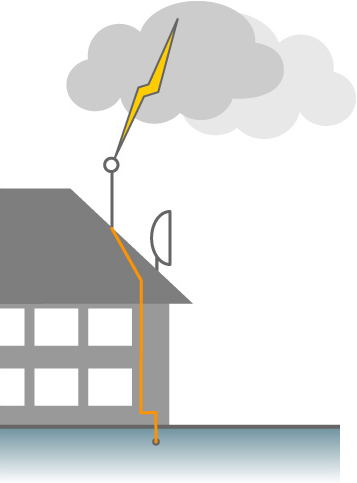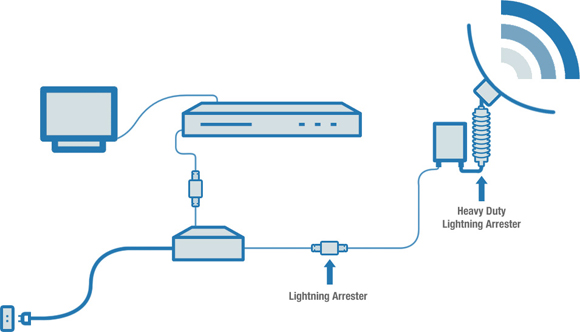Lightning & Surge Protection Guide
Note: Measures can be taken to reduce the possibility of damage to your Wireless Networking devices from lightning strikes or electrical surges by installing Lightning Arrestors or Surge Protectors and Lightning Rods. There is no guarantee that these actions will fully protect your equipment, however, it is highly recommended that you take as much precaution as possible.
Since antennas are usually mounted high up to gain the best connection they work as great lightning strike points being very good conductors (as lightning strikes the highest possible electrical conductor and travels to the ground over the shortest path). Therefore protection must be located all along the Wireless Network from the antenna through to your Wireless Networking devices to provide as much safeguard as possible.
Lightning Rods
Lightning rods can be used to lure a direct strike away from the antenna and, when properly ground, can reduce the level of danger significantly. A lightning rod consists of a metal rod or conductor mounted on top of a building that is electrically connected to the ground through a wire that causes lightning to strike the rod in preference and conduct the electricity harmlessly to ground through the wire, instead of passing through the building, where it could damage your Wireless Networking equipment.

Lightning Arrestors (Surge Protectors)
A lightning arrestor should be placed at any location where wires enter a structure or between Wireless Networking devices in the hope that they will prevent damage to the electronic devices inside whilst also ensuring the safety of anybody near them. Lightning arrestors are small devices, that are connected between each electrical conductor in a Wireless Networking system and the Earth, that provide a short circuit to the ground that is interrupted by a non-conductor over which lightning jumps. Its purpose is to limit the rise in voltage when a communications or power line is struck by lightning. These should be used between the antenna and the Wireless Networking Radio device and also between any connections between the Wireless Networking Radio device and further equipment located down the line.

Grounding
The most important factor with regards to the performance of your lightning protection Wireless Networking equipment is grounding. Good, low impedance between the Earth and the ground connection to the associated equipment should be sought after as this will ensure that the majority of the electricity from spikes or hits will be dissipated into the ground rather than to your equipment.